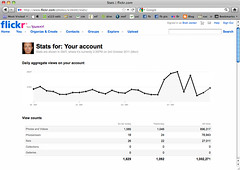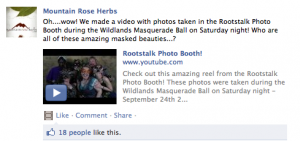Social Media Keeps People Engaged Long After the Show
You’re finished with this year’s big show. You had a great time, your employees did great, your sales people knocked down some big sales. Your lead generation tactics brought in more leads than the last time.
So you’re celebrating. Great! Awesome!

Now what? Do you wait until next year to ramp up for the big show again? If so, doesn’t that mean you’re really starting from scratch with a lot of people? Or you have to reintroduce yourself to the people that you met at this year’s show, and there’s a bit of awkwardness while you try and remember who they are and hope they remember you.
There’s an easier way.
It’s called social media. You know: Facebook, LinkedIn, YouTube, Twitter, Google+. When you are engaged in social media, you are involved in the right thing to stay in touch with all of those people year-round. So let’s take a stab at a handful of things you can do on social media to stay in touch.
It can start anywhere. Of course you’ll need to actually have outposts set up on the main social media outlets. At the next show make sure that your visitors can connect with you on your most-valued social media outposts. Could be Facebook, maybe it’s Twitter or YouTube – just have something available that you can either hand out or show them that makes it easy to connect. Perhaps that’s a post-card sized handout with your social media URL’s, or perhaps even a QR Code that takes them to a landing page that links to those places.
Also at the show: create as much content you can that you will share later. For instance, shoot videos of demonstrations, interviews, testimonials and other fun stuff. During the next 10-11 months, release a short video every 4 – 6 weeks. If you shoot a couple of hours of video during the show, it should be fairly easy to find 8 – 10 short 3 – 5 minute videos to post regularly. Shoot a few hundred photos – you can use them for future blog or social media posts. Take notes on questions that are asked. Use them to create an FAQ post for your blog.
As you continue to keep connected to your social media community, let them know what’s going on in your business. Share new products, introduce new people in your company; engage with your followers by asking and answering questions. As your company is involved in various events throughout the year, do the same things as that last big show. Even if it’s just putting up a table at a marathon or tabling at a retail outlet. Post photos and comments from those events.
Then when your next big annual show gets closer, start mentioning what you’re doing at the show: new products, new people, new services, in-booth guests. Whatever you have going, make sure that your community knows about it.
When the show finally opens, you’ll have visitors that have stayed in touch with you all year long – because you took the time to stay in touch with them! They’ll already know what new products you have and will make an effort to stop by to make sure then don’t miss them. They’ll remember you because you have been a part of their life – however small – over the past year.
It’s one of the toughest things for a tradeshow exhibitor to face: once the show is over, how do you stay in touch until the next time you meet those visitors who loved your company and your products?
Social media is the easy and most obvious answer.
Are you engaged in social media? Are you staying in touch year-round?
Get the free report “7 Questions You’ll Never Ask Your Exhibit House”









